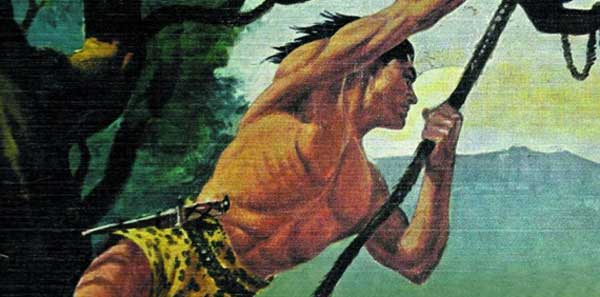“Mastery” is a big word.
If you practice Karate, you should strive for it.
In every punch, kick, block and strike – move towards incremental mastery.
To me, that’s what makes Karate so fun!
There is always something to improve.
Like the legendary founder of Shito-ryu said:
“Karate is a lifetime study.”
– Mabuni Kenwa (1889-1952)
But…
Is there any secret formula for this lifelong process of mastering Karate?
Yup!
It’s called “Shu-Ha-Ri” in Japanese.
And today, dear Karate Nerd™, I’d like to share my understanding about this ancient 3-step formula for mastering Karate with you.
Check it out:
Step 1: Shu (“Follow The Rules”)

The first step to mastery is to follow the rules.
In Japanese, “Shu” literally means “to obey”, “keep intact” or “protect”.
In other words…
Do EXACTLY what your sensei says!
- Follow the lines.
- Copy the forms.
- Imitate the moves.
At this stage, your only job is to observe and memorize what you are being taught.
Just like a child, learning to write the alphabet on a blackboard.
In the legendary words of Bruce Lee; try to be completely empty and formless – like water, poured into the cup of your sensei.
At the Shu stage, you are constantly processing, collecting and memorizing information that is being presented to you. Then you repeat it, over and over again.
From a neuroscientific viewpoint, Shu is your conscious mind.
But…
Eventually, you begin to float to the next stage.
Step 2: Ha (“Break The Rules”)

Now you’ve arrived at step two.
In Japanese, “Ha” literally means “to detach”, “let go” or “break away”.
This might seem paradoxical.
But once you have memorized important details, forms and techniques, you need to STOP thinking about them.
Seriously.
You need to break free from the constraints of imitating, memorizing and copying (Step 1, “Shu”) and take charge of your continued learning process.
This is hard for people, because change is scary!
For this reason, many Karate-ka never make it past the “Shu” stage.
They’re stuck…
…in an endless loop of technical nitpicking.
But, just like Tarzan swinging on his vines in the jungle, you need to let go (“Ha”) of your current vine if you want to jump to the next one.
Only then can your Karate skills become second nature.
You stop thinking.
You just react.
From a neuroscientific viewpoint, Ha is your subconscious mind.
This is what people often refer to as “muscle memory”, because your techniques have transferred from your relatively slow & heavy conscious mind to your fast & instinctive subconscious mind, through gazillions of repetitions in the “Shu” stage.
Get it?
Lastly, you flow into the final level of mastery.
Step 3: Ri (“Make The Rules”)

At this point, let’s be honest:
You’re pretty badass.
In Japanese, “Ri” literally means to “leave”, “go beyond” or “transcend”.
And that’s exactly what you’re doing now.
After you’ve slavishly “followed the rules” (Shu) and rebelliously “broken the rules” (Ha) it’s time to masterfully “make the rules” (Ri).
Voilà!
This means, you finally transcend the obvious by connecting the dots and seeing the unseeable – tapping into your supreme, absolute, limitless depth of creativity.
You finally make Karate your own!
From a neuroscientific viewpoint, Ri is your superconscious mind.
This whole Shu-Ha-Ri process; where you transcend from the conscious mind to the subconscious mind to the superconscious mind, goes for all skills – not just Karate.
For example, cooking food with a recipe:
- At first, you follow the recipe exactly (Shu).
- But when you’ve memorized the recipe, you don’t use it anymore (Ha).
- Eventually, you start freestyling, substituting ingredients according to your own taste, creativity and feeling (Ri).
Tadaa!
You’ve just “mastered the dish”, using the 3 steps of Shu-Ha-Ri.
Just like Karate.
And here’s the coolest part:
Now everything begins again!
Because learning never stops, my friend…
“Karate is a lifetime study.”
– Mabuni Kenwa (1889-1952)
This is the essence of Shu-Ha-Ri.
Now go master Karate.
I believe in you.




40 Comments